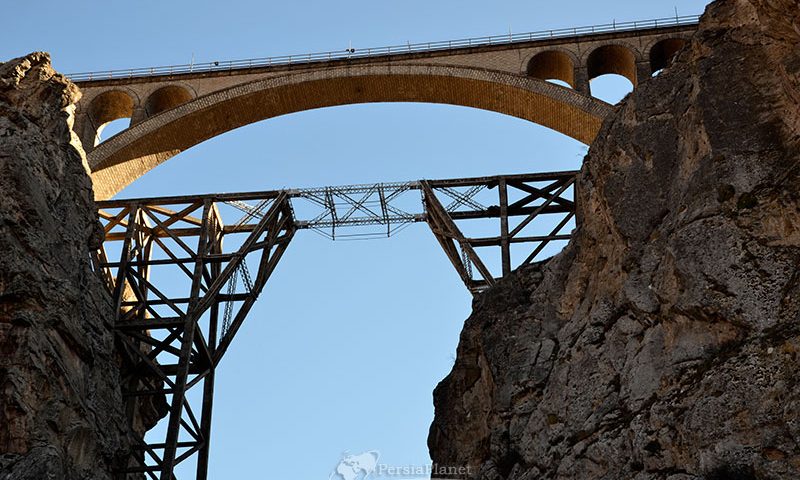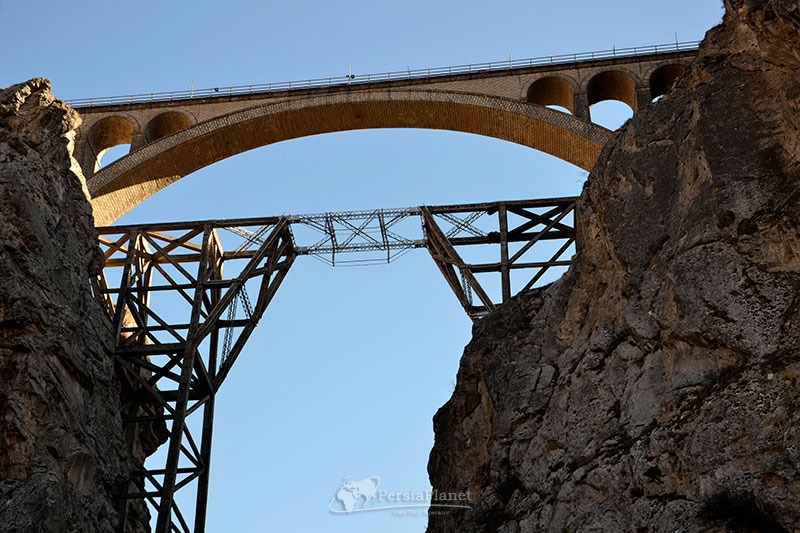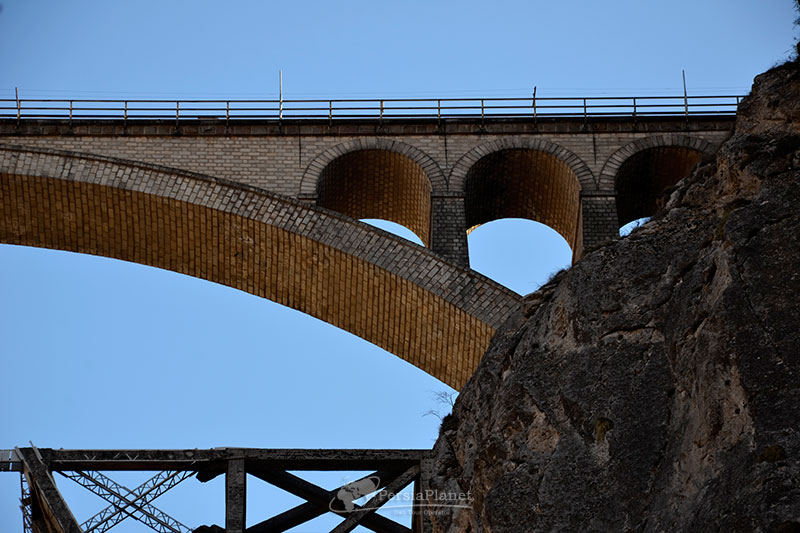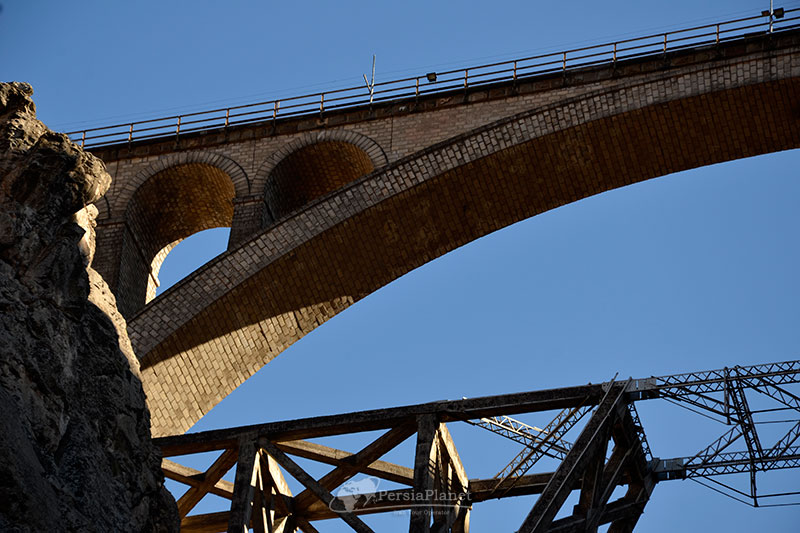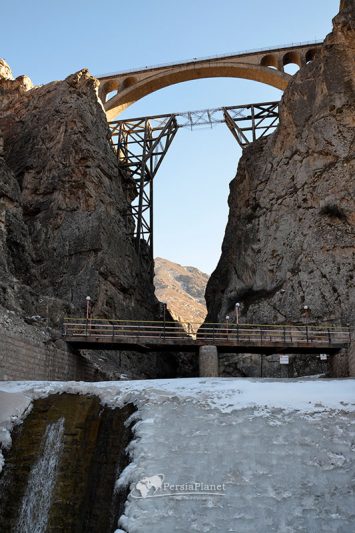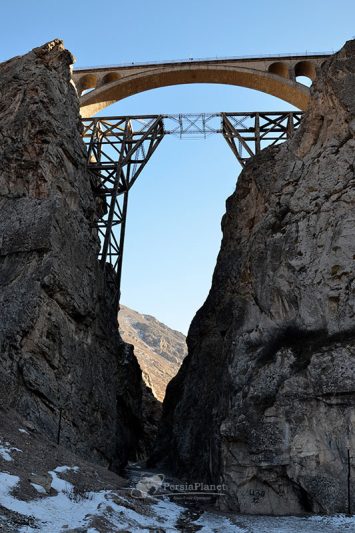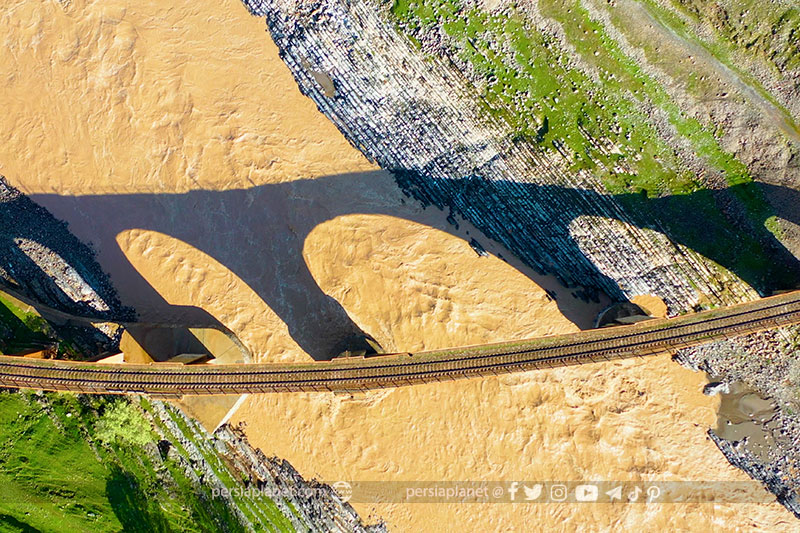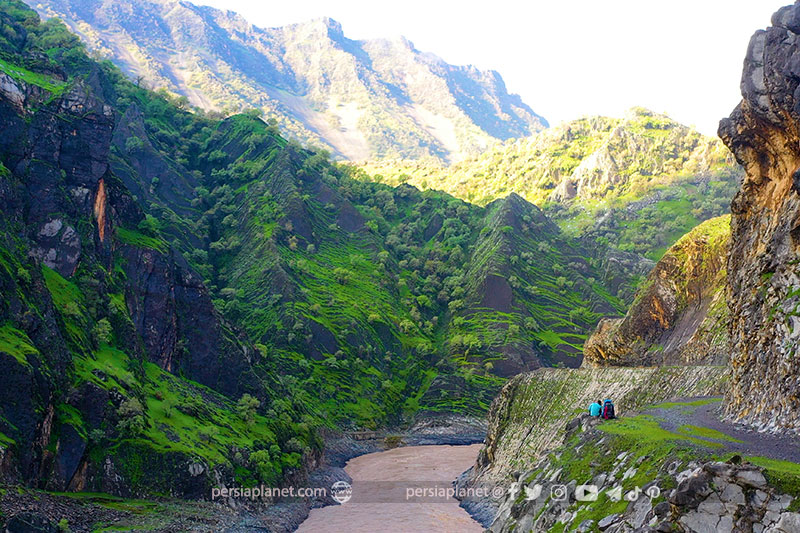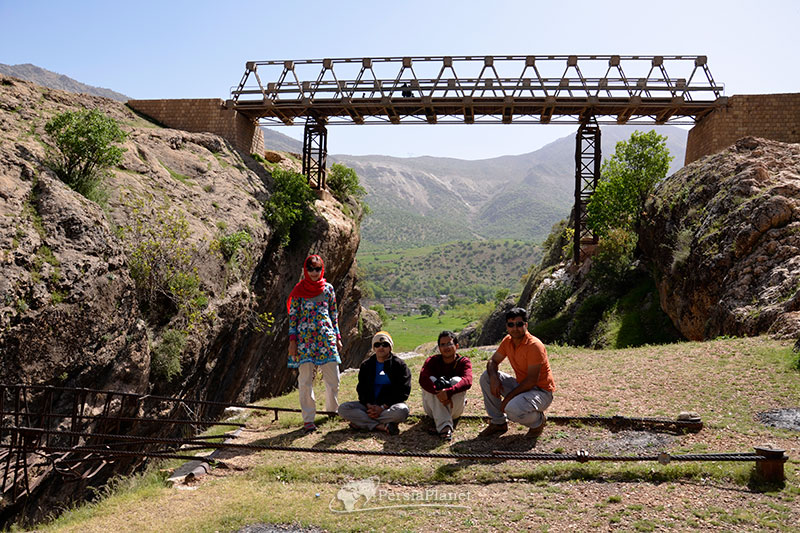Veresk Bridge, Pol-e Veresk

Kol Khersan, Kul Kherson
July 7, 2021
Keshit Waterfall
July 10, 2021Versk Bridge is one of the most beautiful and famous historical bridges in Iran and one of the engineering masterpieces of the country, the purpose of which was to build a train to the north of the country. This bridge was built in a period of two years (1934-1936) and finally in 1977 it was nationally registered.
This bridge, which is located on the Tehran-North railway, played an important role in the fate of World War II, and if it did not exist, there would be another outcome for the war. For more information on the history and construction of the Veresk Bridge, follow this article.
Firuzkuh Veresk Bridge
Veresk Bridge is located next to a village of the same name at the top of Veresk Valley and between the two huge mountains of Abbasabad and is located on the Tehran-North railway line. This bridge, which is considered as one of the sights of Savadkuh and has become the largest railway bridge in the north of the country, was inaugurated in 1977. Today, this bridge is used only for passing Tehran-Gorgan, Tehran-Sari passenger trains and fuel and freight trains. Veresk Bridge was built at an altitude of 2,140 meters above sea level; Its height from the bottom of the valley reaches 110 meters.
The Veresk Bridge is one of the most valuable technical and engineering works of the railway in the north of the country, which was built by a Danish company. The historical and engineering importance of this bridge is such that it has been registered in the list of national monuments.
In any case, the beautiful appearance of this bridge, which is located in the mountainous nature of Alborz, encourages every tourist to stop for a short time along its route and visit this spectacular bridge.
If you have the opportunity, be sure to go to the Veresk River and enjoy the cool weather of this area and the beautiful scenery around it. Veresk Falls can also be included in your itinerary; Especially near the Veresk Bridge. This waterfall is located in the east of Veresk village and spring and summer are the best time to visit it.
Where is Veresk Bridge?
Veresk Bridge is located in Veresk village in Savadkuh city of Mazandaran province. This bridgeis on the railway line in the north of the country on the Veresk valley (Abbasabad). The distance from Veresk bridge to the southern part of Ziraab city is about 45 km and to Ghaem city is 85 km.
To reach Versak Bridge, you must select the Firoozkooh axis. If you are leaving Tehran, first move towards Jajroud and Gilavand to reach Firoozkooh city. After this city, pass through the villages of Gaduk and Shurab, so that by stepping into the village of Versak, you will be offered a beautiful view of the Veresk bridge.
Address of Veresk Bridge: Veresk village, Savadkuh city, Mazandaran province
History of the Veresk Bridge
The historical role of the Veresk Bridge is not limited to connecting the south to the north of the country; Rather, the fate of the world changed during World War II, and if this bridge and railway had not been built. During World War II, Russian and British forces attempted to strike at Hitler’s Germany and its allies, and due to Iran’s special geographical location and the existence of railroads and oil wells, made it a place for rapid movement of weapons and ammunition between Allied forces they chose.
Who built the Veresk Bridge?
In 1926, Iran approved the plan to build a national railway in Iran, which was an important step in the development and prosperity of the country. According to this plan, a railway line would connect the south and north of Iran; However, its construction and laying required knowledge that did not exist in the country at that time. To this end, the Pahlavi government decided to outsource the construction of the railway to a foreign company, which eventually won the lottery under the name of the Danish company Kampsax.
The contract for the construction of the national railway was signed in May 1913 with the CEO of the Danish company, “Jorgen Saxild”. He later used a view of Veresk on the cover of his book, Diary of a Danish Engineer, published in 1350.
The company had previously built 1,200 kilometers of railways in Turkey; Therefore, he was able to take responsibility for this project. Under the agreement, the Danish company was required to build 900 kilometers of railroads over a six-year period, receiving about 1.5 grams of pure gold ($ 5 gold) per meter of railroad. In general, the construction of this bridge cost two million and 600 thousand rials.
The design of this clever and beautiful bridge was the work of an Austrian engineer named “L. Von Robcevidc”. He said in an interview at the time:
The day I came up with the plan to build the Versailles Bridge, other engineers looked at it in amazement and considered the execution of the plan and its construction as one of the achievements of engineering. Now that this bridge has been built, everyone admires me and my comrades and considers it one of the best beautiful bridges and a masterpiece of engineering.
Hans Otto Notter, a mathematical and bridge construction genius who supervised the construction of stairways across Iran, was also in charge of computing engineers and the designer of the Versk Bridge.
Tomb of the builder of the Veresk Bridge
Austrian engineer “Walter Inger” was another engineer who built the Veresk Bridge, which is said to have dropped three gold lines from the bridge when the project was completed, said goodbye to the gallows and was buried in the village of Veresk.
What materials is the Veresk Bridge made of?
The materials of this beautiful structure include cement, mortar, brick and washed sand. One of the interesting points in Veresk bridge materials is that no steel, metal structure were used in its construction.
During the construction of the Versailles Bridge, it was guaranteed to last for 70 years; More than eighty years later, however, it still stands powerfully over deep valleys, displaying the knowledge, commitment, and ingenuity of its creators.

